
Primus-HD® (clear)
1-Step-Preload in perfection: Clear IOL, aspherical
The benefits at a glance:
- Aspherical optics (aberration correcting -0.20 µ)
- Optics with posterior-convex design
- Hydrophobic acrylate – glistening-free – grade „0“ on the Miyata scale
- 360° continuous, sharp edge
- Haptics angled at 1.5°
- Modified C-loop
- UV filter
- Refractive index 1.48 at 35°
- 13 mm total diameter
- 6 mm optic diameter
- Dptr. -10.0 to + 36.0 in 0.5 steps – all dptr. preloaded
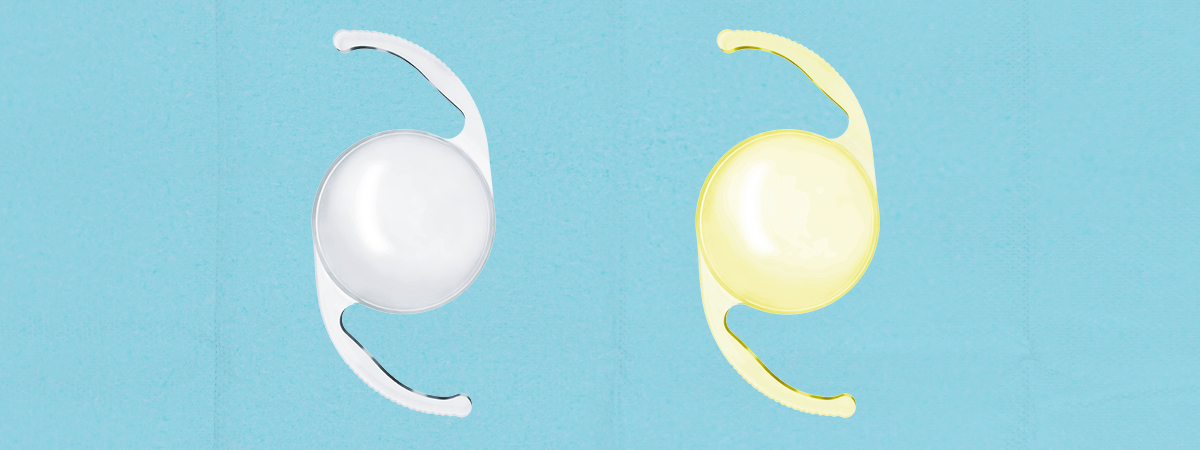
Primus-HD® Yellow
1-Step-Preload in perfection: IOL with blue light filter, aspherical
The benefits at a glance:
- Aspherical optics (aberration correcting -0.20 µ)
- Optics with posterior-convex design
- Hydrophobic acrylate – glistening-free – grade „0“ on the Miyata scale
- 360° continuous, sharp edge
- Haptics angled at 1.5°
- Modified C-loop
- UV filter and integrated blue light filter (cut from 390 nm – 470 nm)
- Refractive index 1.48 at 35°
- 13 mm total diameter
- 6 mm optic diameter
- Dptr. -10.0 to + 36.0 in 0.5 steps – all dptr. preloaded
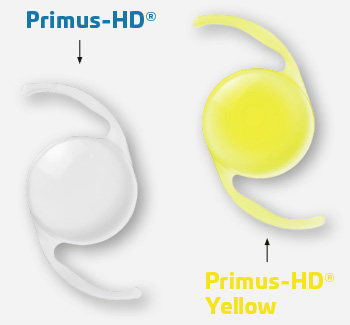
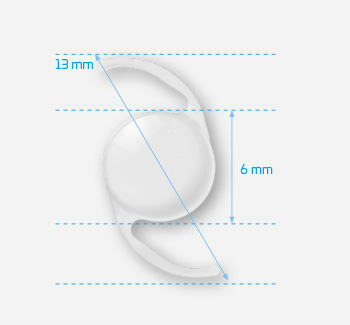
Prosert® Preload Injector
The self-developed Prosert® Preload Injector will win you over with its easy handling. After filling with the viscoelastic material, the injector is ready for use.
- Controlled implantation thanks to precision screw thread
- Prosert® – one step „into the bag“
- Optimal lens fit, 100% preloaded
- Dynamic tip allows implantations with 2.0 – 2.2 mm incisions
- Outer diameter of the injector tip: 1.78 mm
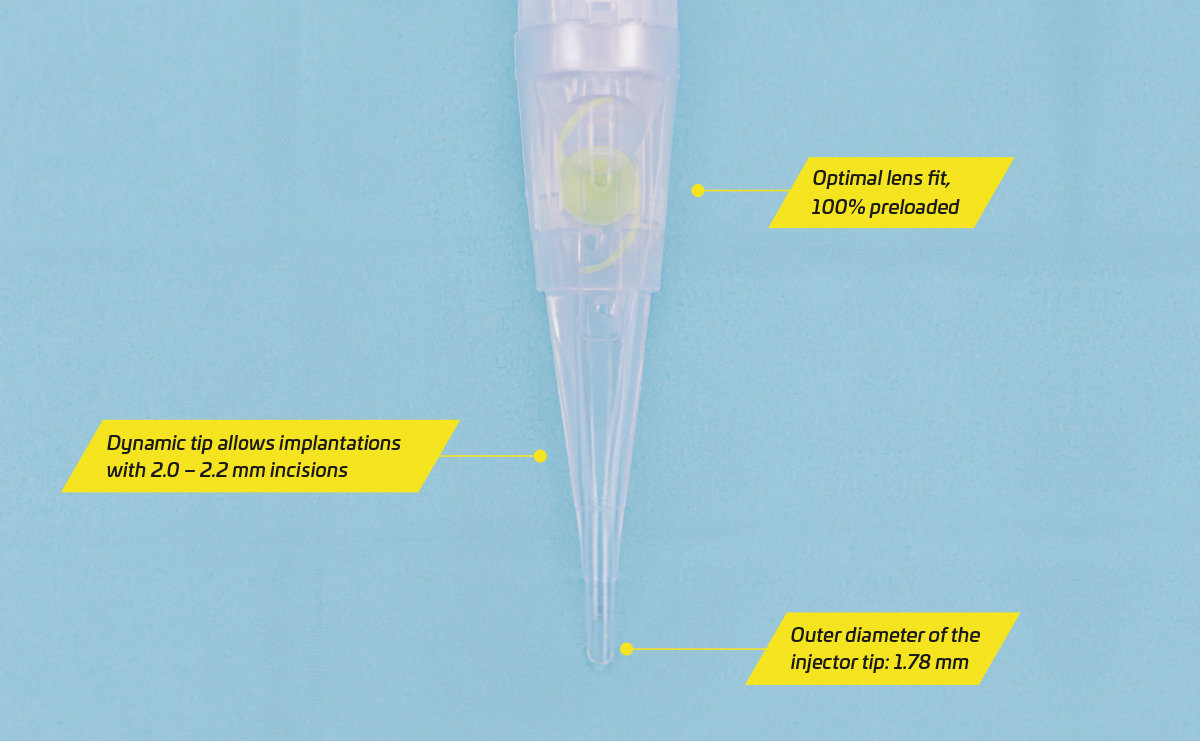
Spherical standard intraocular lenses have been used in cataract surgery for many years. A number of manufacturers offer a large selection of these lenses. However, the disadvantage of using spherical lenses is that they cause certain optical defects that affect the quality of vision. Aspherical Primus-HD® intraocular lenses prevent these optical defects. This helps improve the general quality of vision, in particular due to their optimisation of contrast sensitivity and night vision.
In spherical lenses, incident light passing through the periphery does not converge at the same point as the incident light passing through the centre. The reason for this is that the optical power of the lens rises as the distance of the incident light from the centre of the lens increases. This means that incident light falling in the periphery is more strongly refracted by the lens than incident light falling in the centre. Spherical aberration thus causes blurring in images with wide-open light beams, in other words when the pupils are widely dilated. This causes vision to be blurred. This defect can be eliminated by decreasing the curvature of the lens surfaces towards the edge. This is exactly what aberration correction Primus-HD® intraocular lenses offer.
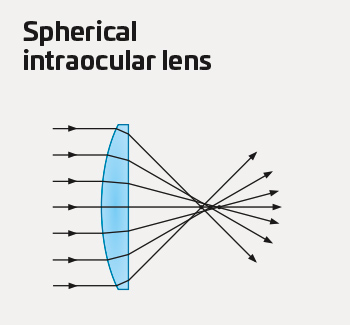
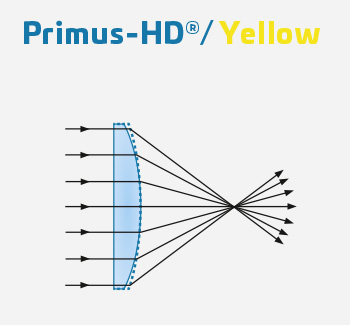
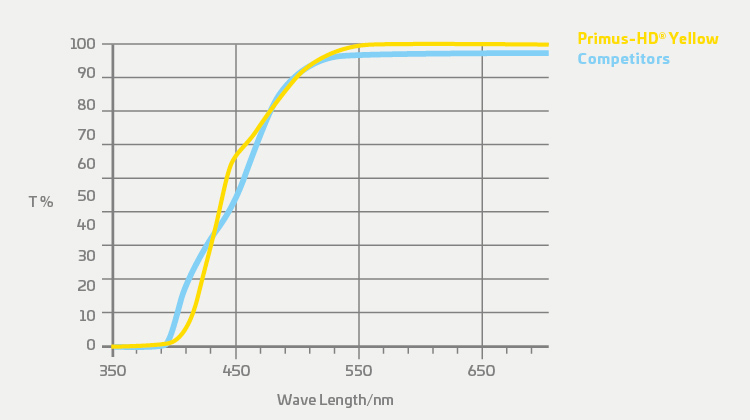
In contrast, the aspherical Primus-HD® intraocular lenses converge all the incident light at the same point. This allows light rays that are far away from the centre of the lens to be focused at the same point as near or central incident light. This is a requirement for achieving the ideal vision sharpness, especially at night, when the pupil grows much larger in the dark and the passing light beams are wide open.
Modified C-loop
- Ensures lens adjustment to capsular bags of different sizes
- Ensures excellent centring and stability

Functionality
Implantation of the Primus-HD® via an incision size of 2.0 mm „into the bag“
The following description is merely a summary of the handling and does not replace the instructions for use.
Step 1: Wetting
At the beginning of the aspiration phase, fill in the viscoelastic material through the infusion opening to allow sufficient wetting. The injector remains in the holding container.

Step 2: Implantation preparation
Remove the injector from the container when the surgeon is ready for the implantation.

Step 3: Implantation
Slowly push the IOL in the direction of the injector tip by turning the screw handle clockwise until the front haptic has reached the bevel. Insert the injector tip with slot down (Bevel Down) through the incision deep into the capsular bag and release the lens by smoothly turning the screw handle further into the capsular bag.
Implantation via an incision size of 2.0 mm „into the bag“ is possible
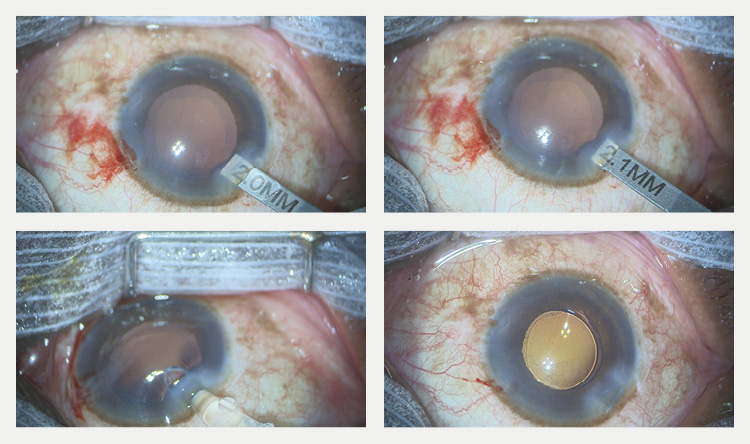
| Technical data | Primus-HD® / Primus-HD® Yellow |
| IOL type | Single piece |
| Material | High-purity, hydrophobic acrylic, glistening-free, grade „0“ on the Miyata scale |
| Filter | UV-filter (Primus-HD® Yellow with blue light filter) |
| Lens type | Posterior convex, aspherical optics (aberration correcting -0.20 μ) |
| Powers | -10.0 to +36.0 in 0.5 D increments, all strengths preloaded |
| A-constant* | 118.9 (nominal) |
| Lens diameter | 6.0 mm optic zone |
| Total diameter | 13.00 mm |
| Haptic design and angularity | Modified C-loop, 1.5° |
| Edge design | 360° ultra-sharp square edge, roughened edge |
*The A constant is the basis for calculating the lens power.
It is recommended that these be customized based on the experience of the operating surgeon and the equipment used.
| Optimized values for laser biometrics | Primus-HD® / Primus-HD® Yellow |
| Nominal | 118.9 |
| Haigis | a0=1.46 a1=0.40 a2=0.10 |
| HofferQ | pACD 5.68 |
| Holladay | sf=1.91 |
| SRK/T | 119.2 |
| SRKII | 119.6 |
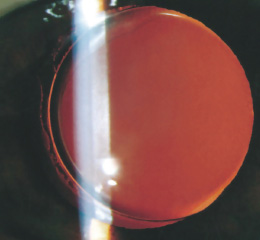
Ultra-pure premium acrylic, glistening-free, no sticking of the haptics, high light transmission.
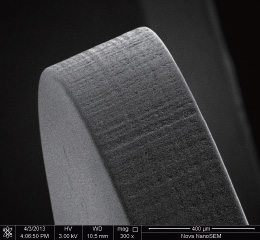
Roughened lens edge, effectively prevents glare induced by the lens edge.
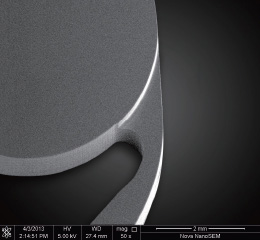
360° contact with the posterior capsule.
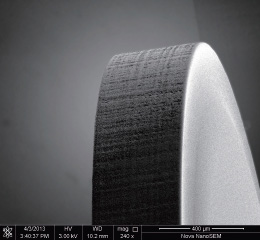
360° ultra-sharp square edge design, increased barrier effect against LECs.
